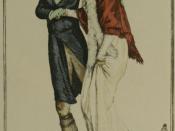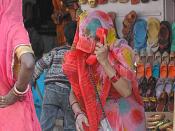Abstract.
Communication patterns begin developing when we are born. Families tend to pass traditions, values, beliefs, and discriminations down to the next generation. These factors affect the way we communicate with others throughout our lives. As our social circle enlarges our influences change and the way we communicate may change also to meet the needs of the situation we are facing. Ethnicity also affects our interactions with others. Ethnic values and traditions are kept throughout our life. We are inclined to continue traditions passed to us from our family and ethnic group. Learning to adapt our communication habit to others will be a key factor in our personal and business success.
Communication: Culture and Family Ties.
Communication is the interactive sharing of information, values, beliefs, and traditions (Catalano 2000). There are two types of communication verbal, spoken or written words, and nonverbal, using body language to convey messages. A sender and receiver are required for communication to be successful.
The sender sends a message, the receiver is to listen, process and respond to the sender. Both, the sender and receiver, must function properly to prevent miscommunication. Several factors may influence the manner in which messages are sent and received. Factors such as perceptions, values, education, cultural influences, and family traditions and values affect the way we communicate (Catalano 2000).
Family traditions and values are passed down through generations. Communication patterns developed during the formative years continue to influence interactions with others that we come in contact with. Galvin (2000) states that communication develops between two or more persons; patterns develop over time and influence other interactions. Each interaction shapes the relationships within the family unit. Galvin (2000) describes communication patterns as:
... communication patterns are created by the actors' perceptions and their reactions to each other. Such patterns can become...


